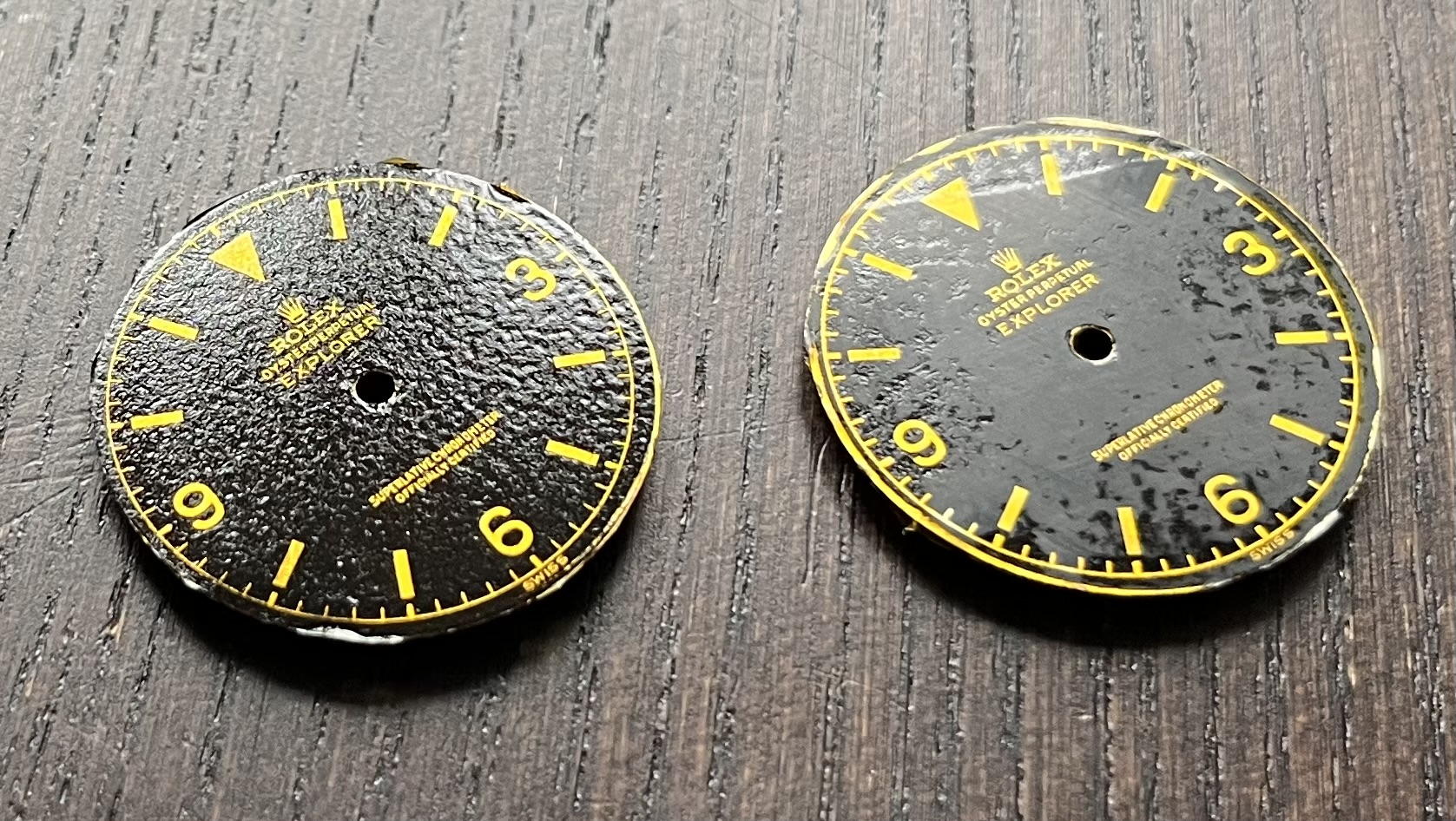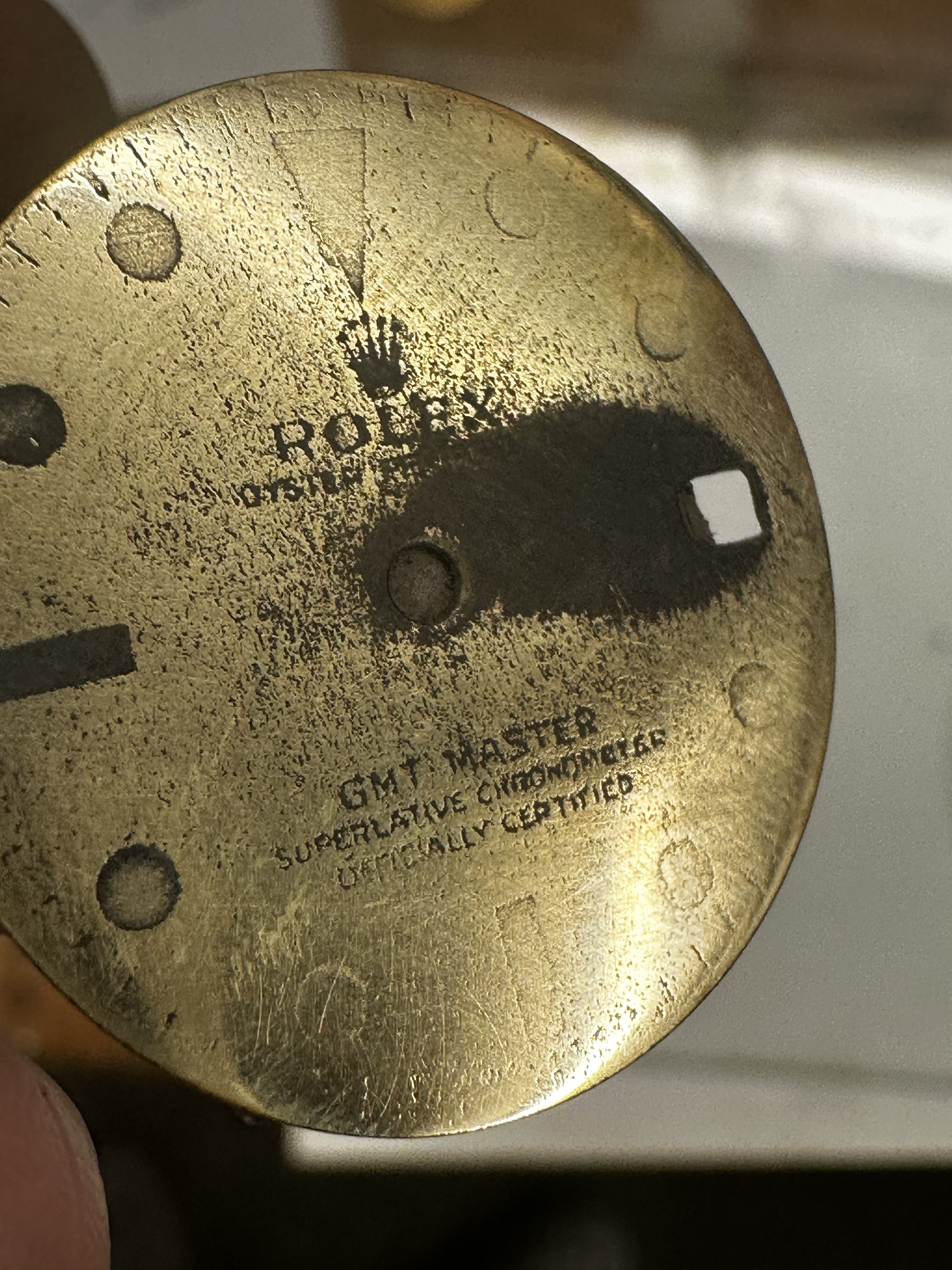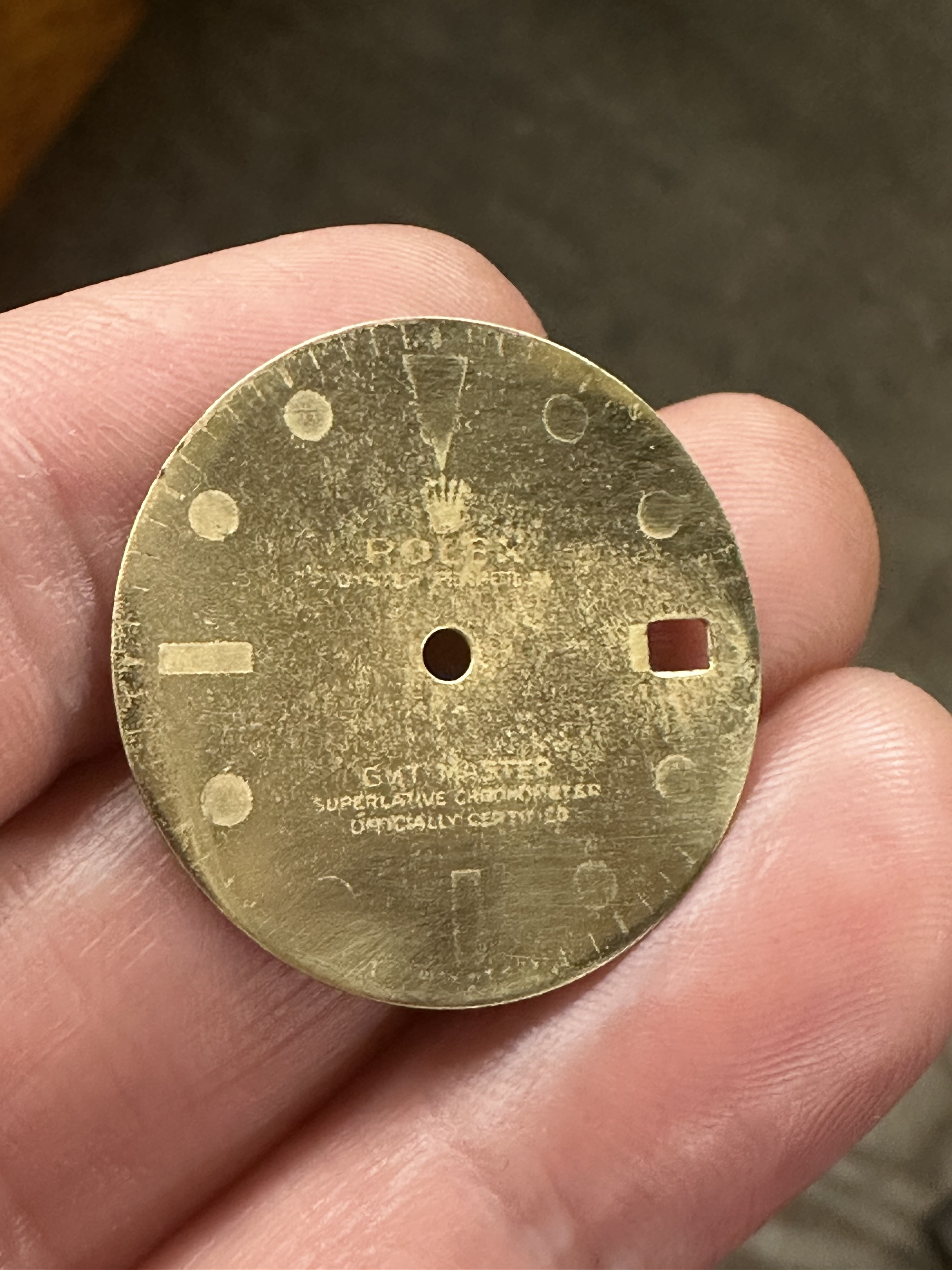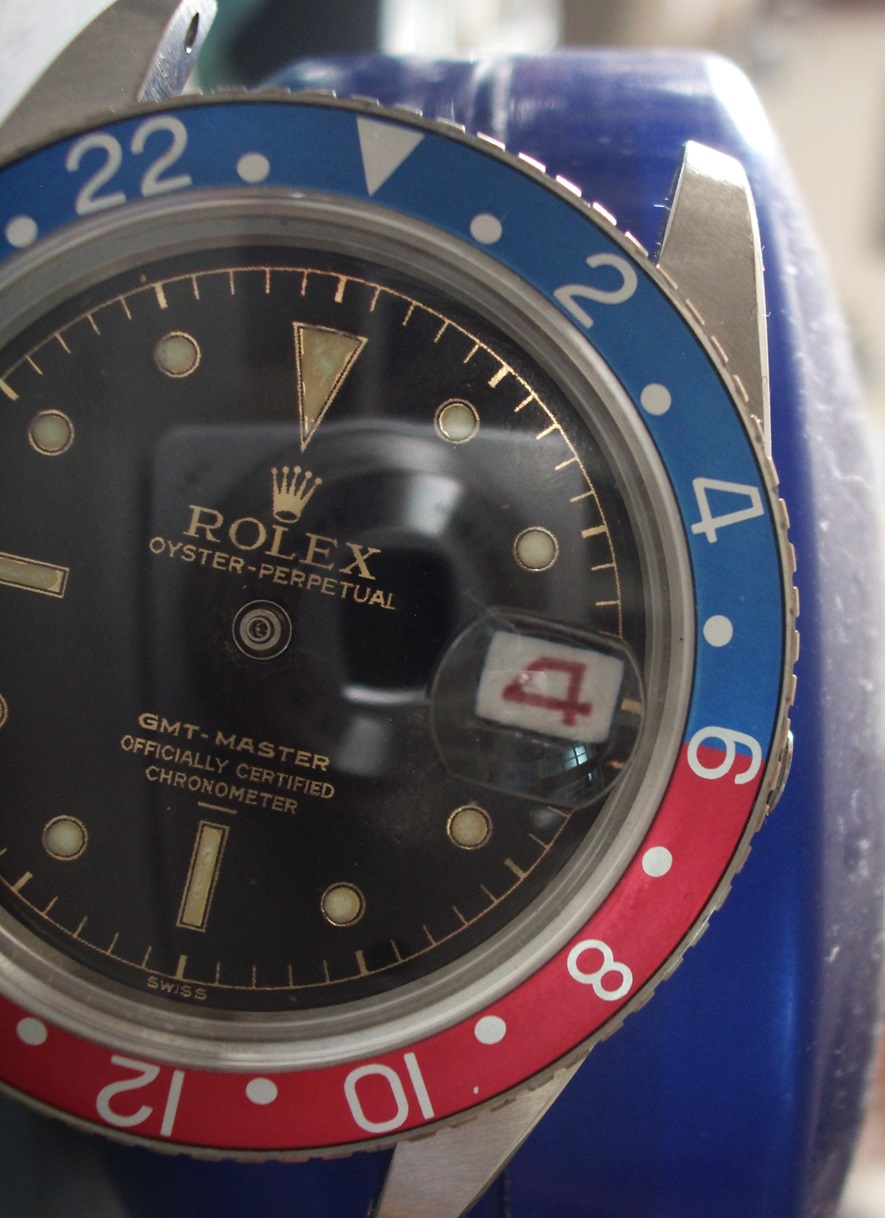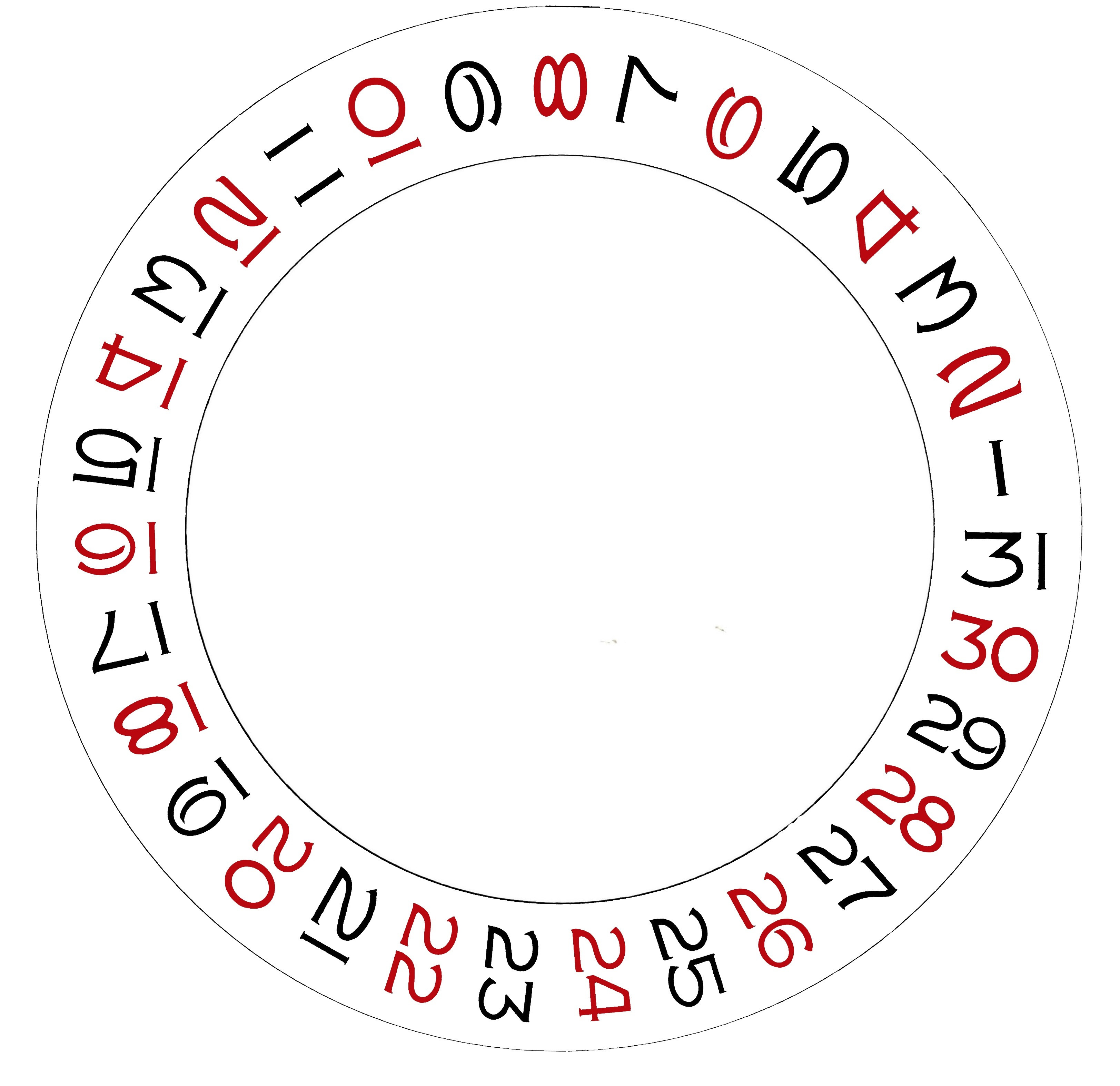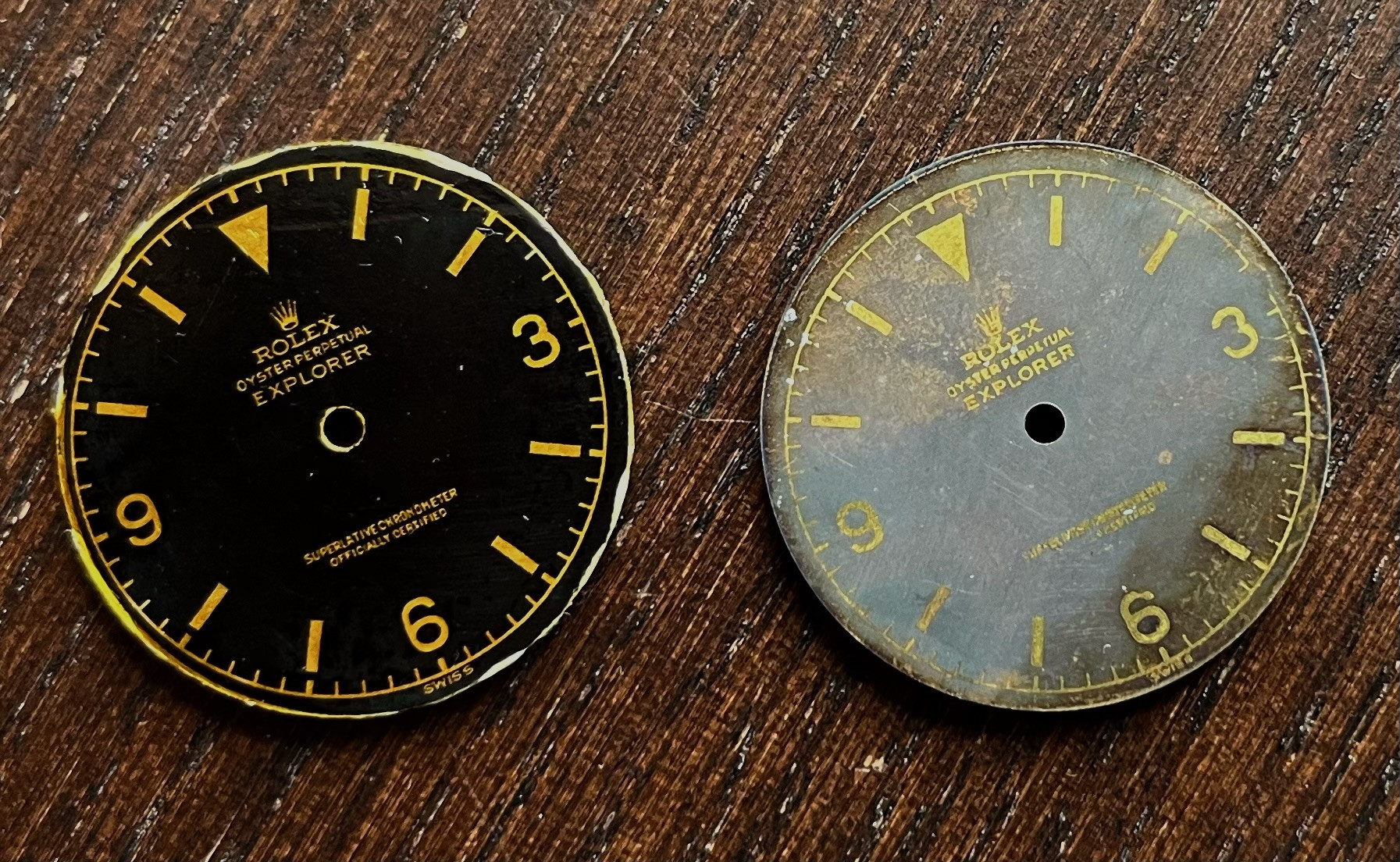I use Rustoleum gloss lacquer and wet sanded with 3000 grit.
I've always stayed away from trying to polish paint or clear coat with a dremel. Some speed is okay, but dremels are high RPM and will easily burn through the paint. You can try watering down your polish, but I would recommend using something like a dremel polishing bit in an electric screwdriver (or a even the screwdriver with a mini foam polishing pad). It's difficult to polish something so small, even a little snag on the edge can burn right through. It happens with industrial 2k paints, and lacquer or acrylic is nowhere near as hard and is more sensitive to heat. In my experience, a buffing wheel is usually safer than a dremel, depending on the polishing compound.
@janneau @WatchN3RD
I recently tried polishing a nitrocellulose lacquered dial with 3000 grit, wet sanding by hand. About 3-4 dozen passes. Smoother, but dull. Went up to 5000 (a dozen passes) then 7000 (a dozen passes), both dry. All by hand. Very smooth, but still dull. Do I need to keep going? Will a machine-aided process be necessary? I then used a Cape Cod cloth, but no polishing compound (don't have any). Recommendations here? I've never tried to polish anything to gloss, so guidance is appreciated.

